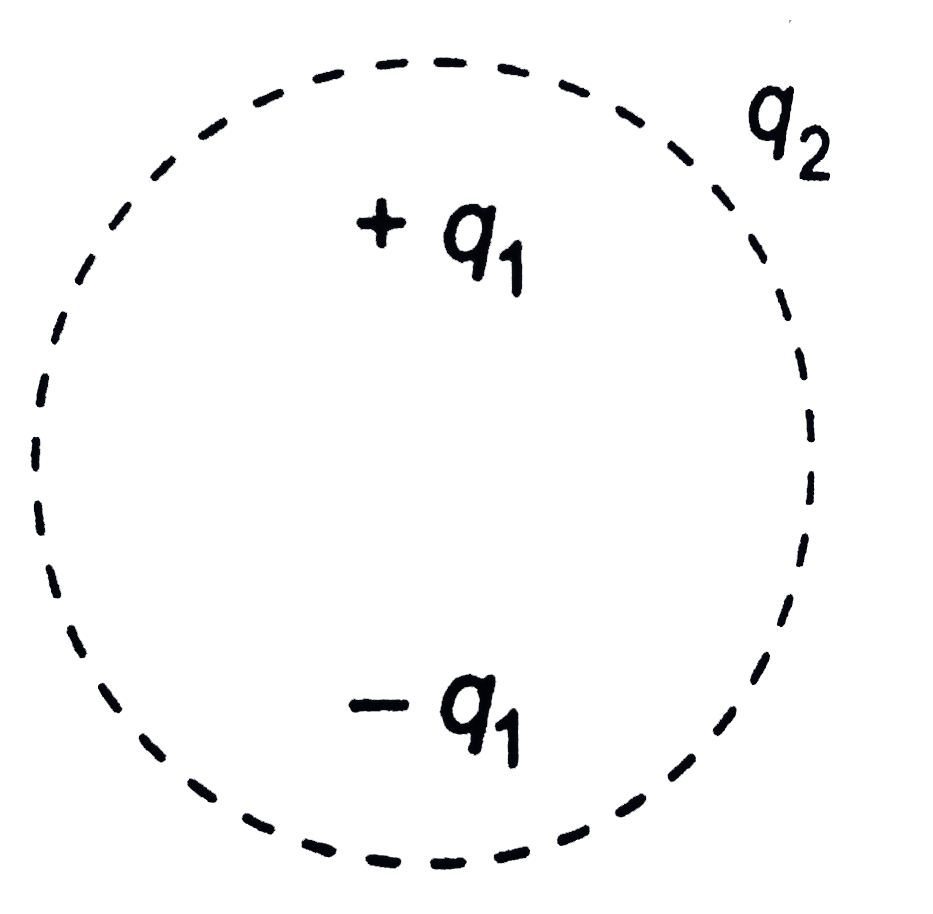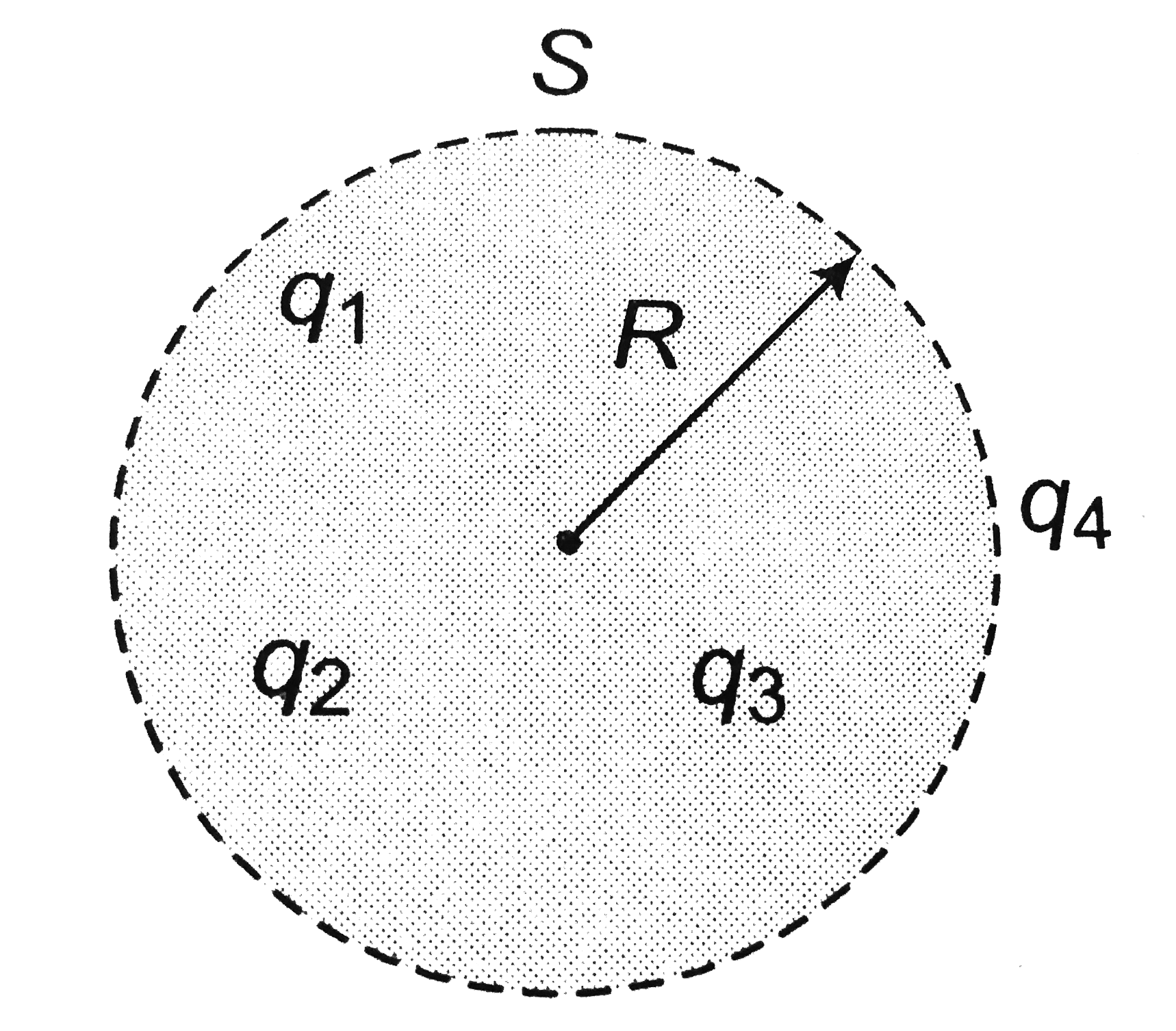Complete Solutions to Check point 1.5 of chapter ELECTROSTATICS of Class 12 book with complete answers and questions
| Class 12 | PHYSICS |
| Chapter | ELECTROSTATICS |
| DC PANDEY NEET | Check point 1.5 |
| Number Of Questions | 20 |
| Academic Year | 2023-24 |
The law goverening electrostatics is coulomb's law.In priciple coulomb's law can be used to compute electric field due to any charge configuation .In pracitce however it is a formidable task to compute electric field due to uniform charge distributions .For such cases Gauss proposed a theorem which states that
`ointbar(E).bar(ds)=(q)/(epsilon_(0))`
where `ds` is an element of area directed across the outward normal for the surface at every point .The integral is called electric flux.Any convenient surface that we choose to evalute the surface integral is called the Gaussian surface.
The `SI` unit of electric flux is
View SolutionA surface element `vec(ds) = 5 hat(i)` is placed in an electric field `vec(E) = 4 hat(i) + 4 hat(j) + 4 hat(k)`. What is the electric flux emanting from the surface ?
View SolutionA cube of side `a` is placed in a uniform electric field `E = E_(0) hat(i) + E_(0) hat(j) + E_(0) hatk`. Total electric flux passing through the cube would be
View SolutionFlux coming out from a positive unit charge placed in air, is
View SolutionIf the electric flux entering and leaving an enclosed surface respectively is `phi_1` and `phi_2`, the electric charge inside the surface will be
View SolutionCharge of 2 C is placed at the centre of a cube. What is the electric flux passing through one face ?
View SolutionFor a given surface the Gauss's law is stated as`oint vecE.dvecA=0`. From this we can conclude that
View SolutionThe total electric flux emanating from a closed surface enclosing an alpha particale (e = electronic chage) is
View SolutionThe inward and outward electric flux for a closed surface in unit of `N-m^(2)//C` are respectively `8xx10^(3)` and `4xx10^(3)`. Then the total charge inside the surface is [where `epsilon_(0)=` permittivity constant]
View SolutionIf the flux of the electric field through a closed surface is zero ,
(i) the electric field must be zero everywhere on the surface
(ii) the electric field may be zero everywhere on the surface
(iii) the charge inside the surface must be zero
(iv) the charge in the vicinity of the surface must be zero
View SolutionConsider the charge configuration and a spherical Gaussian surface as shown in the figure. When calculating the flux of the electric field over the spherical surface, the electric field will be due to.

View Solution`q_(1),q_(2),q_(3)` and `q_(4)` are point charges located at point as shown in the figure and `s` is a spherical Gaussian surface of radius `R`. Which of the following is true according to the Gauss's law

View SolutionThe Gaussian surface for calculating the electric field due to a charge distribution is
View SolutionIf Coulomb's law involved `1/r^3` instead of `1/r^2`, would Gauss's law still be true?
View SolutionTwo parallel infinite line charges with linear charge densities `+lambda C//m` and `-lambda C//m` are placed at a distance of `2R` in free space. What is the electric field mid-way between the two line charges?
View SolutionAn infinite line charge produces a field of `9xx10^(4) NC` at a distance of `2cm`. Calculate the linear charge density.
View SolutionA charge of `17.7 xx 10^(-4)C` is distributed uniformly over a large sheet of area `200 m^(2)`. The electric field intensity at a distance 20 cm from it in air will be
View SolutionFrom what distance should a 100 eV electron be fired towards a large metal plate having a surface charge of `-2.0 xx 10^(-6) Cm^(-2)`, so that it just fails to strike the plate ?
View SolutionIf the field near the earth's surface is `300V m^(-1)` directed downwards , what is the surface density of change on the surface of the earth?
View SolutionA thin spherical shell of metal has a radius of `0.25 m` and carries a charge of` 0.2 muC`. The electric intensity at a point for outside the shell will be
View Solution
Check point 1.5 questions and complete solutions for chapter ELECTROSTATICS of DC PANDEY PHYSICS (HINGLISH) of Class 12
All Exercises from DC PANDEY NEET Class 12 PHYSICS ELECTROSTATICS
- Assertion and Reason
- Check point 1.1
- Check point 1.2
- Check point 1.3
- Check point 1.4
- Check point 1.5
- Example
- Example Type 5
- Example Type 6
- Example Type 8
- Exercise 24.1
- Exercise 24.2
- Exercise 24.3
- Exercise 24.4
- Exercise 24.5
- Exercise 24.6
- Exercise 24.7
- Level 1 Assertion And Reason
- Level 1 Objective
- Level 1 Subjective
- Level 2 Single Correct
- Match the columns
- Medical entrances gallery
- SUBJECTIVE_TYPE
- Taking it together